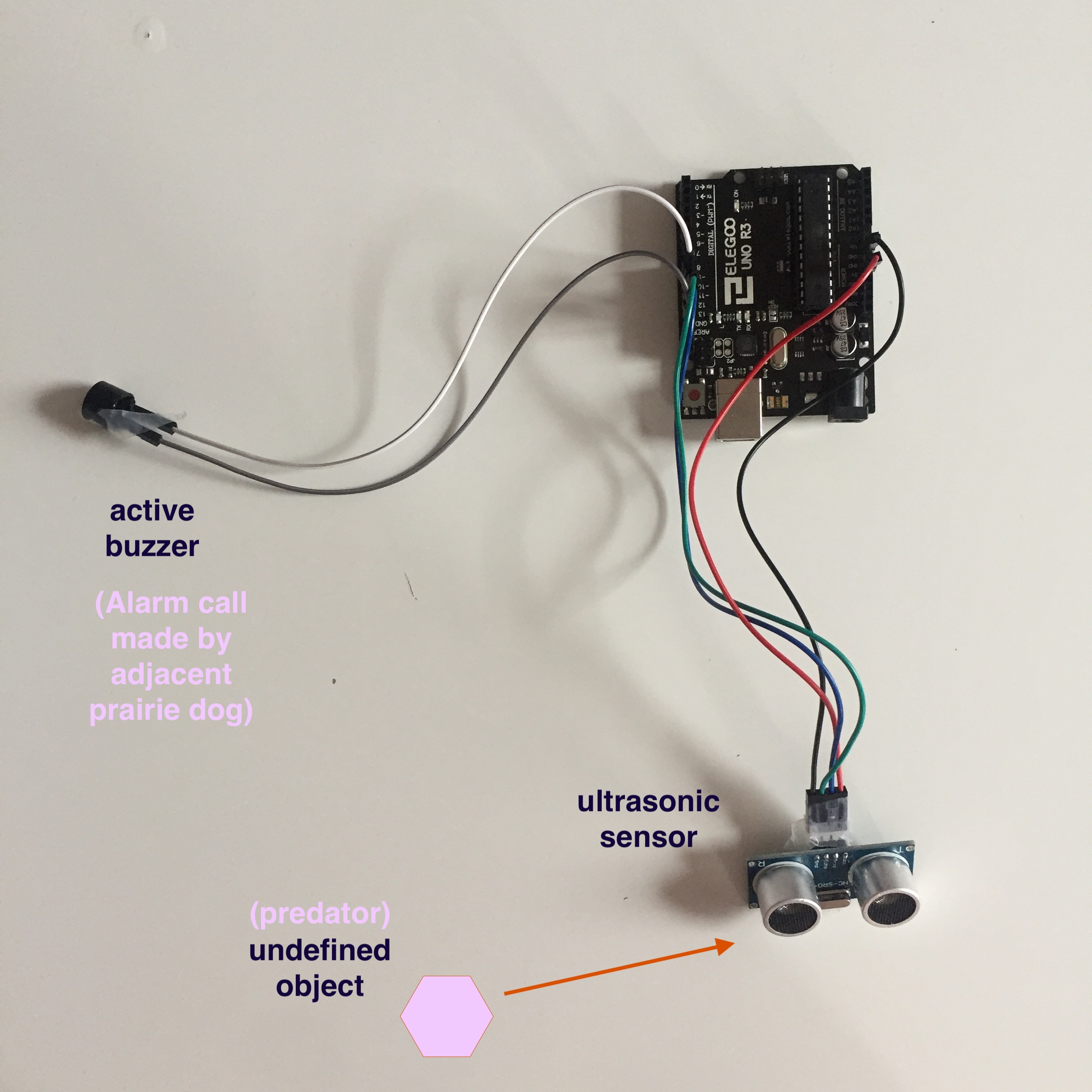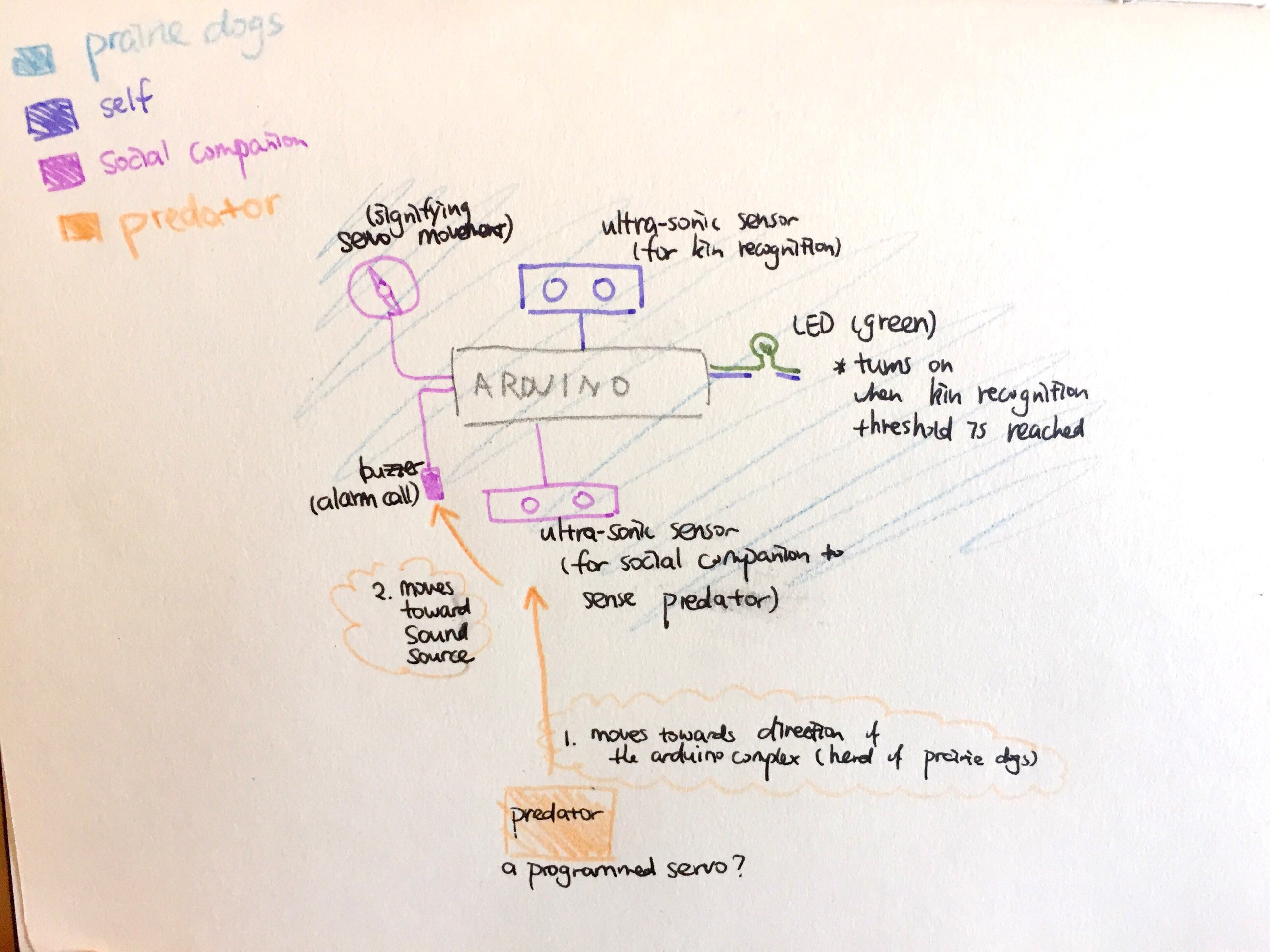Interaction Design in the Wild - Sonia Zhang's Portfolio
I am an anthropology student trying to make sense of interaction design for animals.
Week 4 - Empathy Machine
by Sonia
“The whole rich world around the tick shrinks and changes into a scanty framework consisting, in essence, of three receptor cues and three effector cues - her Umwelt. But the very poverty of this world guarantees the unfailing certainty of her actions, and security is more important than wealth.”
Jakob Von Uexkull, A Stroll Through the Worlds of Animal and Men: A Picture Book of Invisible Worlds
For our task this week, we are to “create a technical working prototype that allows a human to experience animal senses/locomotion or other animal processes”.
What is empathy? What does it mean for a human to engage with animals’ experience? This is an exploration of these questions, starting with conceptualisation, then demonstration of an extremely crude prototype, followed by users’ reactions and my reflection.
This is also the first design prototype I have created :).
What could affect empathy? What are the sensitive moments?
If we define empathy as the sensory engagement with other entities’ feelings, there is certainly a lot of animal experiences to engage with. But the question here is how to develop a device that goes beyond personal curiosity, to create a genuine motivation to understand and connect, and to expose us to the vulnerabilities that embed the anthropocene.
Moments of pain and suffering have always been powerful in triggering emotions and the sense of commonality. However, developing a “painful” prototype might involve ethical concerns too sensitive for this particular context.
It is also worth considering what can an empathy machine uniquely achieve comparing to other forms of engagement, such as watching a movie or reading literature. Unlike visual art, which involves long-term sensory immersion and participation, at most times with a story, the experience of an empathy machine, at least with my current technical competency, is inherently more instant. Within a limited time frame of product experience, how can I do something unique about empathy that is different from reading a novel?
What do I try to empathise? What justifies my choice?
After considering what kinds of empathy can be meaningful, I try to imagine what would it be to experience sociality. Can we experience the social universe of an animal through our sensorial faculty? Social learning is a cognitive process, many scientists would say. But can we mimic the sense of connectivity, bond, the urgency to respond…that are described as the animal social instinct?
I believe experiencing this can be powerful because human is described as a social animal. Although perceived in different ways, the primacy of social interaction might be one of those things that can open a channel for human-non-human connectivity. I believe our course’s overall aim is to move beyond the framework of human/animal as two mutually exclusive domains, and reconsider their interactions, entanglements and relationships. A vast body of scholarship (ethnobiology, multispecies ethnography, ecological psychology, just to name a few) is already actively exploring these entanglements, and design technology can enrich this process by making sociality an entry point.
Social connections also expose animals’ vulnerabilities. In many contexts, individuals respond to species-specific callings no matter how much life-threatening danger is embedded in their environments. Moving to an animal welfare perspective, industrial noises that humans create in the anthropocene can seriously disrupt social recognition cues in one’s environments, leading to behaviours that are not supposed to be triggered, and result in danger.
How do I use my device for empathy?
My machine tries to imitate the perception of receiving an alarm call. Alarm call is exemplified as one of the classic cooperative, or altruistic behaviours in the animal kingdom. By making alarm calls, the individual increases others’ chances of survival but essentially exposes themselves to the danger, at most times the attention from predators. Many animal species exhibit alarm calls, amongst them the prairie dogs (genus Cynomys) are well-studied, well-known and sensitive to visual cues when making alarm call. Thus prairie dogs will be the target species of this machine.

image from https://www.worldwildlife.org/stories/8-surprising-prairie-dog-facts
Using an Arduino Uno board, I connected an ultrasonic sensor and an active buzzer. When an object, the predator, approaches the ultrasonic sensor and the distance is less than 10 cm, the active buzzer will be triggered by making a rapid beeping noise. The beeping noise would represent the alarm call made by companion prairie dogs, in most cases a kin. In other words, as the user, imagine yourself as a prairie dog, you should be able to become aware of the predator by listening to alarm calls.
The implication of this device is not only to make users experience the hearing of an alarm call, but also to recognise how vulnerable this mechanism is in an environment saturated with human activities. Alcock has remarked that when prairie dogs live close to human walk-ways, they give alarm calls all the time, which are essentially false signals. However, learning that calls are no longer associated with life-threatening danger, the population would “unlearn” alarm calls through habituation. Thus they become oblivious to alarm-triggering cues, which changes their entire behavioural repertoire and makes them vulnerable to all sorts of dangers that they were evolved to be sensitive of.
Below is a picture of my prototype. Click here for a demonstration by a dedicated anthropologist!

What are the limitations of my empathy machine?
Apart from technical clumsiness, there are several serious limitations of this device. I was not able to construct the most important aspect of my scenario: when the alarm call is made, the object (predator) would be attracted towards the sound source. Since I was unable to incorporate a motor into this device, I had to use my own hand as an object in all demonstrations, which requires me to explain the context and process to my users instead of giving them the opportunity to explore the prototype themselves. This makes my interviews with them largely consisting guided questions .
Secondly, the process I describe and design does not involve kin recognition, which is necessary to make sense of the vulnerability and sociality embedded in alarm calls. In Life (BBC, 2009), barnacle goslings respond to their parents’ calls by moving towards them, even though they have to let themselves drop from a cliff and risk breaking their necks. (Click here for a short video clip - links to an external source)What is embedded in this sense of urgency and non-optional bondedness? A proposal to incorporate this will be discussed in the next section.
This empathy machine is also a serious over-simplification of prairie dog’s capacity for making alarm calls. Multiple studies have shown that in their alarm calls prairie dogs are able to convey specific information of the predator itself, such as colour and size. Some have proposed that they might be able to use their communication capacity to transfer information of things they have never seen before. (See reference for more information) However, none of these information is shown in my empathy machine, since the only output is a beeping sound of a single frequency.
What do other humans feel when testing your prototype?
My psychoanalyst friend said she feels a sense of desperation, however, it is after my extensive explanations and forceful implantations of expectations, which are representative of a highly unprofessional and incautious designer. Take a look at our brief demonstration, and decide whether she means it or is simply too sweet to discourage me. She said the scenario would feel authentic if there were indeed a predator-object approaching the buzzer, a point that resonates with my reflections on my device’s limitations.
My dedicated anthropologist fellow also said “I feel empathy, I think”, however, suggested that there could be incorporations of more complex factors of sociality. For example, how do I, the user, understand that the active buzzer is in fact a kin of mine? The machine would be more powerful if the user could “learn” to recognise the active buzzer’s sound source as their kins before predators approach. Another ultrasonic sensor might be attached to the Arduino board, in which when the active buzzer is close enough for a threshold length of time, some output could be triggered, representing that the user has learnt to recognise the active buzzer as a kin.
Below is a sketch of the improved version of my empathy machine, with a fuller scenario and more sites for engagements.

Reflection: What does empathy really mean? Why does empathy matter in design?
While there is plenty to improve by incorporating more refined, accurate techniques and sensors into my empathy machine, I wonder whether the ideal empathy will be triggered even if the experience is completely immersive and real-time. Even if the user can learn signals for kin recognition, see a predator approaching, listen to their kins’ callings, how they ultimately feel depends on their interpretations of their scenarios - this is how the mental faculty of human works. In other words, the sense of desperation, urgency and danger are all products of human thoughts rather than a truthful immersion of an animal entity.
If social connection is felt through instinct instead of interpretation of meaning, how can I create something that empathises instinct? Can instinct of another species be felt? Is instinct a truly mechanistic response to external stimuli? Or is thought and consciousness involved? If the latter is true, then how does animal thought differ from us?
Modern science is not in the position to give accurate answers to these questions, and while this empathy machine prototype does not solve the puzzle either, it opens up these questions to the user. The experience of a design prototype is instant but also open-ended. It is not to provide an accurate, immersive mimic of social connection, but to trigger a sense of urgency to respond, no matter how preliminary it might be, so that the users would start thinking about what does it mean, and how does it feel to be in others’ senses of social connectivity.
Reference:
Jaber, F. 2017. Can Prairie Dogs Talk? New York Times. Retrieved 02/09/2019. From https://www.nytimes.com/2017/05/12/magazine/can-prairie-dogs-talk.html
Kriengwatana, B., Escudero, P., & ten Cate, C. (2015). Revisiting vocal perception in non-human animals: a review of vowel discrimination, speaker voice recognition, and speaker normalization. Frontiers in psychology, 5, 1543.
Penn, J and Frommen, G. (2010).Kin recognition: an overview of conceptual issues, mechanisms and evolutionary theory. In Kappeler. P. (Eds.) Animal Behaviour: evolution and mechanisms. *Springer.
Slobodchikoff, C. N., Paseka, A., & Verdolin, J. L. (2009). Prairie dog alarm calls encode labels about predator colors. Animal cognition, 12(3), 435-439.